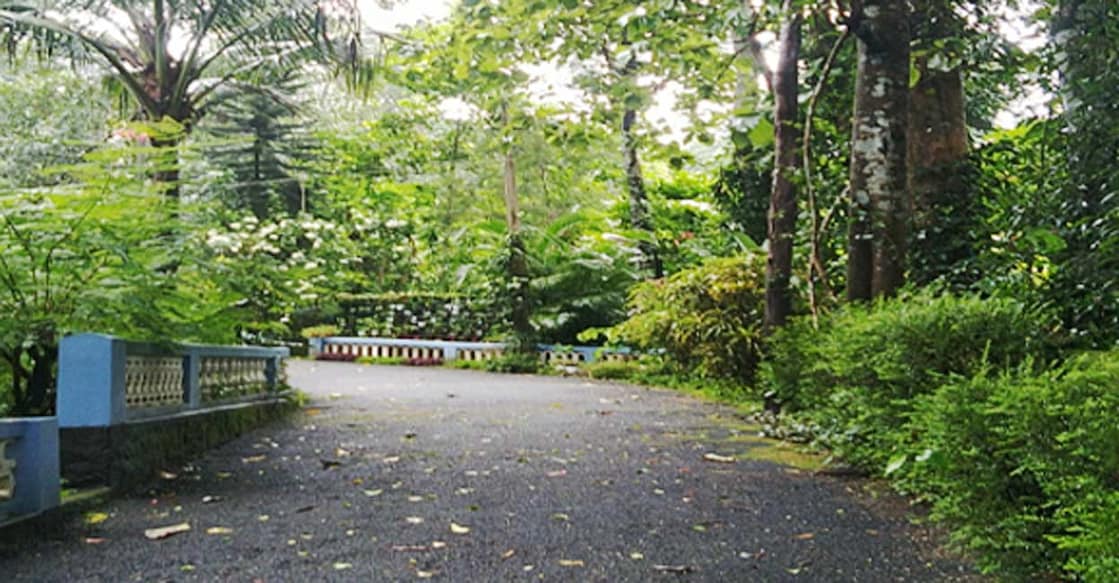Column | Paving our way to ecological degeneration

Mail This Article
Domestic gardens are an essential urban ecological resource. Yards and gardens with increased 'perviousness', whether through natural vegetation or the use of pervious paving systems, help to mitigate floods by allowing more rain to percolate into the soil. Unfortunately, due to limited yard space and increased car ownership, many front gardens have been completely paved over in recent decades. Surface runoff and flood risks have increased as a result of an increase in impervious surfaces and ineffective surface water drainage systems.
With rainfall anticipated to increase by the 2080s, paved gardens and parks are predicted to generate greater runoff in the future as rainfall increases due to climate change. Runoff typically occurs in non-vegetated areas at a rate of over 60% compared to less than 15% of falling precipitation in vegetated areas. Indiscriminate paving also reduces people's access to nature and the environmental benefits they provide. However, only a few countries have planning regulations that limit paving over gardens, and those that do, frequently ignore the impacts of future climate change. To reduce surface runoff from front gardens, indiscriminate paving could be prohibited and penalised, and incentives could be offered for the replacement of impermeable areas of existing paved gardens with an optimal ratio of vegetation and pervious paving.
The asset beneath our feet
Soils provide a diverse range of ecosystem services, including biomass production, carbon storage, and water and climate regulation. Their ecological functions are compromised when they are sealed off by impervious materials. Soil sealing impedes material exchange between the soil and other ecosystem compartments, and its impact on a landscape is determined by the composition of the soil prior to sealing.
Contrary to natural sealing, anthropogenic soil sealing lowers biodiversity, disrupts the carbon cycle, promotes salinization, and has the potential to promote desertification. It may also have a significant effect on heat exchange with the atmosphere. Soil thermal properties differ depending on soil type and moisture level. The temperature in a sealed soil, which is typically higher than in an unsealed soil, is determined by the sealing material's thermal properties, its albedo (fraction of light that it reflects), and emissivity (effectiveness in emitting energy as thermal radiation).
As the temperature rises, the soil’s thermal conductivity decreases. Because heat conducts very slowly in soils, transient temperature changes have negligible effect on the temperature of deeper layers. Surface exchange allows heat from the topsoil to escape into the atmosphere. This raises the temperature of the air near the sealed soil above that of the surrounding areas. This shift in the microclimate is referred to as the urban heat island (UHI) impact. When there is more vegetation than tarred and paved surfaces, such as in a Parambu or garden, evapotranspiration from the leaves helps to cool the environment. Plants also prevent low- albedo materials from absorbing short-wave radiation by shading them.
When impervious exogenous materials such as concrete, tar, metal, and plastic seal the soil, its porosity decreases, resulting in a reduction in water filtration capacity. Surface sealing increases the volume and speed with which runoff reaches the unsealed surface, increasing the risk of ponding and erosion in those regions and supplying significantly less water even during periods of moderate to heavy precipitation. The artificial sealing of the soil surface together with the temperature changes, drastically disrupts the underlying soil water quality and quantity. Higher temperatures and low moisture content also have an effect on soil chemical processes.
Draining it right
Overexploitation affects about 20% of the world's groundwater aquifers. Maintaining permeable surfaces that effectively manage surface run-off, allow water to percolate into the soil, and replenish groundwater.
A sustainable pavement must not only be able to satisfy the requirements of the people for whom they were built, but also be economically, socially, and environmentally viable over the course of its life. They should be able to preserve and protect, and, ideally, "restore" surrounding ecological systems and enhance local climate change resilience.
Sustainability cannot be considered "holistically" if only one tenet, such as cost or environment, is taken into account. Life cycle assessments of materials focus primarily on the environmental impact in terms of carbon footprint, with little consideration given to other types of pollution it may cause, as well as its socio-economic impacts. Life cycle cost analyses seek to determine the most cost-effective solution. It is critical to identify and quantify a wide range of critical sustainable indicators and risks in order to determine the sustainability of pavement systems. A few of the factors that must be taken into consideration include price, risk level, functionality, ease of access and use, safety, resource use effectiveness, emissions, required changes in construction methods, equity in terms of job creation, availability of skilled labour and the potential for regional economic growth.
Let it flow
Reduced permeability of urban areas around the world has led to increased runoff, which has intensified flood events, increased sediment flow, and decreased groundwater replenishment.
Although permeable pavements reasonably mimic the processes of the hydrological cycle, homeowners and local governments must be aware of the benefits of unpaved front gardens and parks, and the environmental and social costs of their unchecked paving. For sustainability in the built environment to be possible, matter must be able to flow freely between ecosystem components in their intended cycles.
(Ann Rochyne Thomas is a bio-climatic spatial planner and founder of the Centre for Climate Resilience - a sustainability and climate change advisory.)


